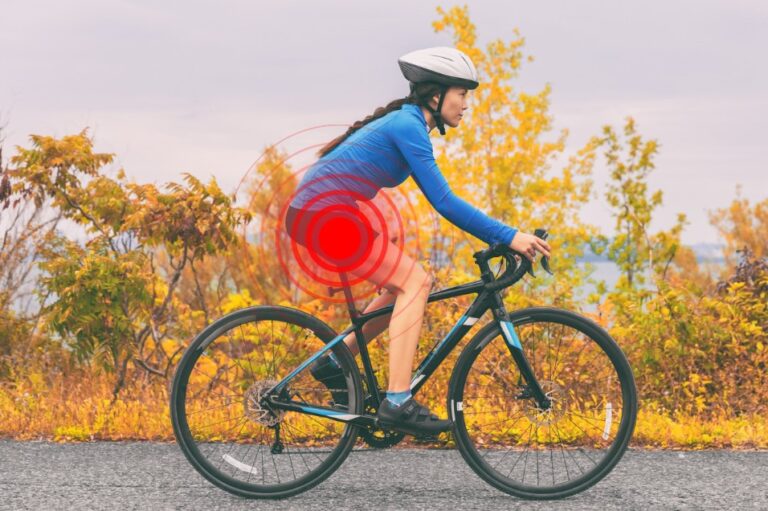Fellow cyclists! If you’ve ever experienced discomfort or pain while riding, you’re not alone.
Many female cyclists in particular, from beginners to pros, have faced the challenge of bike seat pain. From saddle sores to labial swelling, there’s a range of issues that can arise. But here’s the good news: understanding the causes is the first step to finding solutions.
In this article, we’ll explore the most common causes of female bike seat pain and share some tried-and-true remedies to keep you riding comfortably. So, let’s get started and make those long rides enjoyable again!
What Causes Bike Seat Pain in Females
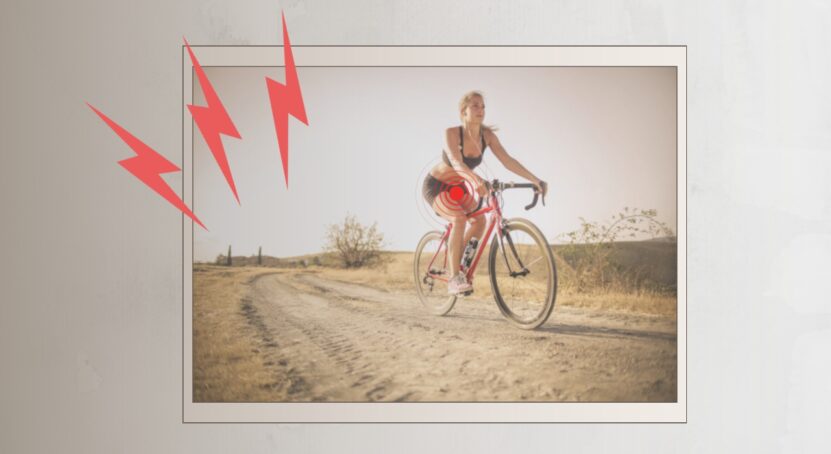
So what exactly triggers this discomfort? Let’s break it down:
- Saddle Sores: These are the pesky irritations that can range from infected hair follicles to chafing and open ulcerations. Consistent pressure and rubbing in the same spot can inflame the skin, making it susceptible to infections.
- Vaginitis: This is a common issue many women face, not just cyclists. Factors like sweating inside tight-fitting clothing can promote the growth of yeast, leading to infections.
- Loss of Sensation: This can be attributed to the saddle or the riding position. Compressing nerves due to an ill-fitting saddle can lead to numbness or tingling sensations.
- Labial Hypertrophy: This refers to the swelling of the labia due to pressure. In some cases, cut-out saddles, designed to reduce pressure, might contribute to the swelling.
- Urinary Tract Infection (UTI): Bacteria from the chamois can sometimes find its way into the bladder, leading to UTIs. Symptoms include frequent urination and a burning sensation.
- Improper Bike Fit: The way your bike fits you plays a significant role in how comfortable you are during rides. An ill-fitting saddle or incorrect riding position can distribute pressure unevenly, causing discomfort.
Types Of Bicycle Seat Pain
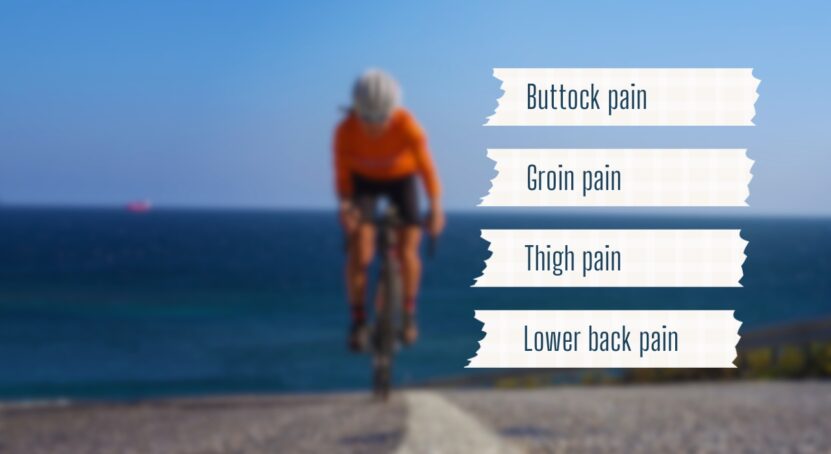
- Perineal: can be caused by pressure on the pudendal nerve
- Buttock: This can be caused by pressure on the sciatic nerve.
- Groin: This can be caused by pressure on the femoral nerve.
- Thigh: This can be caused by pressure on the nerves that run down the legs.
- Lower back: This can be caused by poor posture or an improper fit of the bicycle seat.
Bruised Feeling Around Your Sit Bones
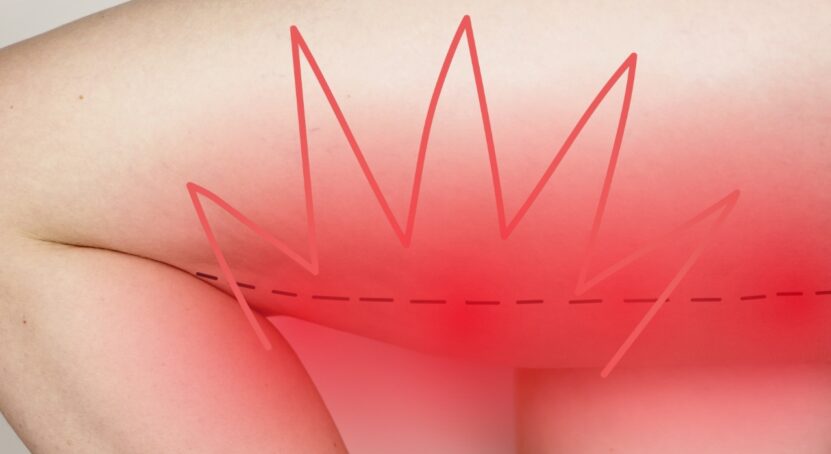
If you’ve ever felt a bruised feeling around your sit bones, you’re not alone. This is a common condition that can be caused by long periods of cycling.
There are a few things you can do to ease the discomfort associated with this condition.
- First, try to avoid sitting or lying on hard surfaces for long periods of time. If you must sit for extended periods, try to get up and move around every so often to keep your circulation going.
- Second, you can try wearing cushioned clothing while you cycle. This will help to take some of the pressure off of your sit bones.
- Finally, if the pain is severe, you may want to consult with a doctor or physical therapist to see if there are any other treatments that may be helpful.
Chafing And Saddle Sores
Chafing can be a big problem for cyclists, especially during long rides. Saddle sores can also be an issue, particularly if you don’t have a good saddle. Here are some tips to help you avoid these problems:
- Use a good quality chamois cream to help reduce friction.
- Make sure your bike seat is the right size and shape for you.
- Wear cycling shorts that fit well and have a good chamois.
- Take breaks during long rides to give your body a chance to recover.
- Inspect your body regularly for any signs of chafing or saddle sores.
- If you do develop saddle sores, there are a few things you can do to treat them:
- Clean the area with soap and water.
- Apply an antibiotic ointment.
- Place a bandage over the sore.
- If the sore is severe, or if it does not improve after a few days, see your doctor.
Soft Tissue Pain
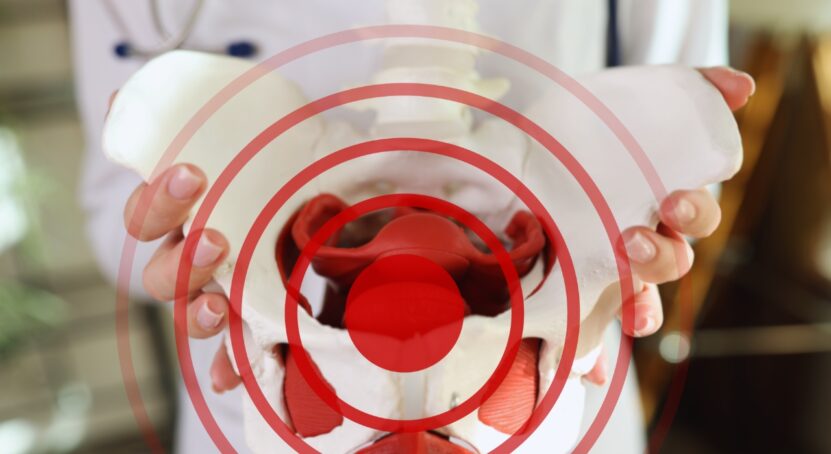
When you are riding a bicycle, your weight is supported by the seat. This can put pressure on the soft tissues in your pelvis and buttocks, which can lead to pain caused by inflammation of the nerves in the area. It can also be caused by pressure on the nerves from the seat itself.
There are a few things you can do to prevent or reduce soft tissue pain while riding your bicycle:
- First, make sure that your seat is the right size and shape for your body.
- Second, try to keep your weight evenly distributed on the seat.
- Third, take breaks often to get off the seat and move around.
- Fourth, if you start to experience pain, stop riding and see a doctor.
Innies Vs. Outies
There are two areas where you can experience thigh pain while cycling, inner thighs and outer.
Inners typically have thinner thighs, so the pressure is felt more keenly. Outers have thicker thighs, so they spread the pressure out more. Either way, it’s not a pleasant experience.
There are a few things that can be done to alleviate this pain:
- First, make sure that the saddle is properly positioned. It should be level with the ground and centered on the bike frame.
- Second, use padded bike shorts or a gel seat cover. These will help to cushion the pressure points.
- Third, take breaks frequently to stretch your legs and give your thighs a rest.
With a little bit of care, you can minimize the pain and enjoy your ride.
Pubic Bone Pain
Pubic bone pain is a common issue for cyclists who spend a lot of time in the saddle. The pain is often caused by the pressure of the bicycle seat on the pubic bone and can be quite debilitating.
There are a few things that you can do to ease the pain and make cycling more comfortable.
- Make sure that your bike seat is at the right height. If it is too low, it will put more pressure on your pubic bone. You should be able to sit on the saddle with your knees bent at a 90-degree angle
- Try a different kind of bicycle seat. There are many different types of seats available that can provide more or less padding. You may also want to try a seat with a cutout in the center, which can take some of the pressure off of your pubic bone
- Make sure that you are wearing proper cycling clothing. Baggy shorts can actually make the pain worse by putting more pressure on your pubic bone. Tight, form-fitting shorts will help to keep the pressure off
- Finally, take a break from cycling if the pain is severe. It is important to rest and allow your body to recover.
If the pain does not go away after a few days, or if it gets worse, you should see a doctor. Cycling can be a great exercise, but it is not worth the pain if you are not comfortable. If you suffer from pubic bone pain, try these tips to ease the discomfort and make cycling more enjoyable.
Bike Fit And Positioning
When you’re riding your bike, it’s important to be in a position that is comfortable and efficient. A proper bike fit takes into account your individual body measurements and riding goals to ensure that you are in the optimal position on your bike.
There are several key elements to consider when getting a bike fit. A Bike fit and positioning for achieving optimal performance on the bike.
A proper bike fit will ensure that you are able to ride efficiently and with power, while a proper riding position will help you to be aerodynamic and minimize drag.
- Seat height: Your seat height should be such that your leg is almost fully extended at the bottom of the pedal stroke. If your seat is too low, you will lose power and efficiency; if it is too high, you will put unnecessary strain on your knees.
- Seat tilt: Your seat should be tilted forward slightly, about 5-10 degrees. This will allow you to use your glutes and hamstrings more effectively when pedaling.
- Handlebar height: Your handlebars should be at a height that is comfortable for you. If they are too low, you will put a strain on your back; if they are too high, you will put a strain on your neck.
- Handlebar width: Your handlebars should be at a width that is comfortable for you. If they are too narrow, you will not be able to get into an aerodynamic position; if they are too wide, you will feel unstable on the bike.
Getting a proper bike fit is the best way to ensure that you are riding in a comfortable and efficient position. A professional bike fitter will take into account your individual body measurements and riding goals to find the perfect position for you. If you’re looking to improve your performance on the bike, a proper bike fit is a great place to start.
Choosing the Right Padded Bike Shorts
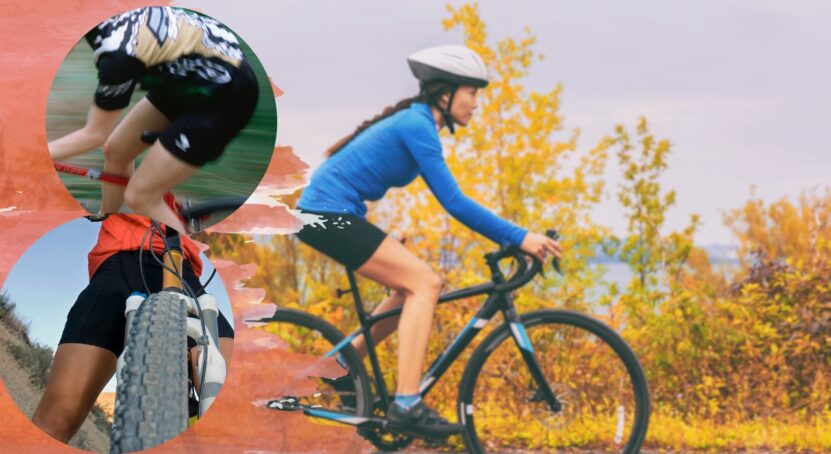
Fashionable right-padded bike shorts are a must-have for stylish cyclists. They offer protection from the elements and help you stay comfortable while riding.
The right-padded bike shorts come in a variety of styles and colors, so you can find the perfect pair to match your personal style. Whether you’re looking for a classic black pair or something more colorful, there’s a right padded bike short out there for you.
When choosing your pair, it’s important to consider the type of padding you need.
- Material: Some cyclists prefer a softer, more cushioned feel, while others prefer a firmer pad for added support.
- Climate: If you’re planning on riding in hot weather, you’ll want to choose a pair of shorts that are made from breathable fabric to help keep you cool.
Once you’ve found the perfect pair of right-padded bike shorts, be sure to break them in before your first ride. Wear them around the house for a few hours or take them out for a spin around the block. This will help you get used to the feel of the padding and avoid any chafing or discomfort on your first ride.
Whether you’re a seasoned cyclist or just getting started, right-padded bike shorts are a great way to stay comfortable and stylish on your rides.
Don’t Wear Underwear With Bike Shorts
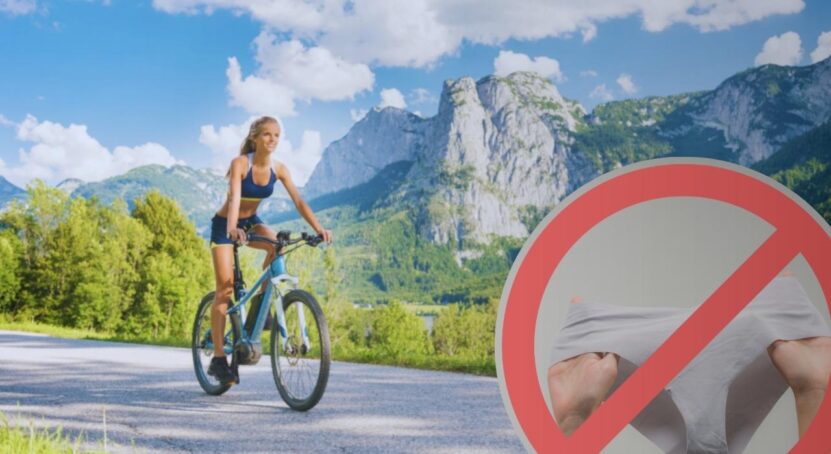
When it comes to bike shorts, there is one golden rule that you should always follow: never wear underwear with them! Here’s why:
- Underwear can cause chafing and discomfort. The fabric of the underwear will rub against your skin as you ride, causing irritation and even pain.
- Underwear can also absorb sweat and moisture, which can lead to bacteria growth. This can cause skin infections or other problems.
- Wearing bike shorts without underwear will help keep you dry and comfortable. The fabric of the bike shorts is designed to wick away moisture, so you won’t have to worry about sweaty underwear.
So, remember: when it comes to bike shorts, always go commando! Your skin will thank you for it.
Watch Out For Seams In Bad Places
If you’re not careful, seams in your clothing can end up in very inconvenient places.
- For instance, a seam in the middle of your back can make it difficult to reach things or put on a backpack.
- Or, a seam at the bottom of your pants can make it difficult to sit down without feeling uncomfortable.
To avoid these sorts of problems, be sure to check the placement of seams before you buy any piece of clothing. And, if you’re having a garment custom-made, be sure to specify where you would like the seams to be placed.
Otherwise, you might end up with some very unwanted discomfort!
Pull the Shorts All the Way Up
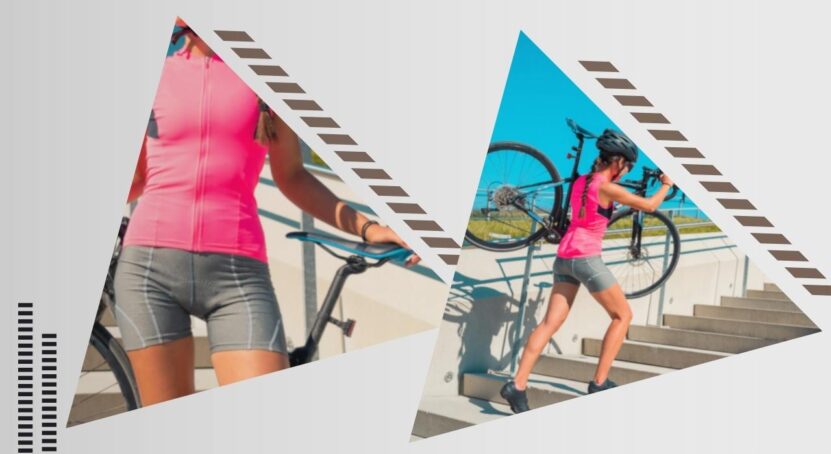
When putting your shorts on, always pull them all the way up.
- This will help prevent them from riding up and becoming uncomfortable.
- Additionally, be sure to adjust the waistband so that it is not too tight or too loose.
- Lastly, if your shorts have pockets, be sure to empty them out before putting them on.
Wear Other Pants or Shorts Over Compression Leggings
You can wear other pants or shorts over your compression leggings if you want extra coverage or support. This is a popular option for athletes who want to avoid chafing or thigh rubbing. It can also help keep you warm in colder weather. If you choose to wear other pants or shorts over your compression leggings, make sure they are not too tight.
Tight clothing can constrict blood flow and actually reduce the benefits of compression. Opt for looser-fitting garments made from breathable fabrics.
Chamois Cream
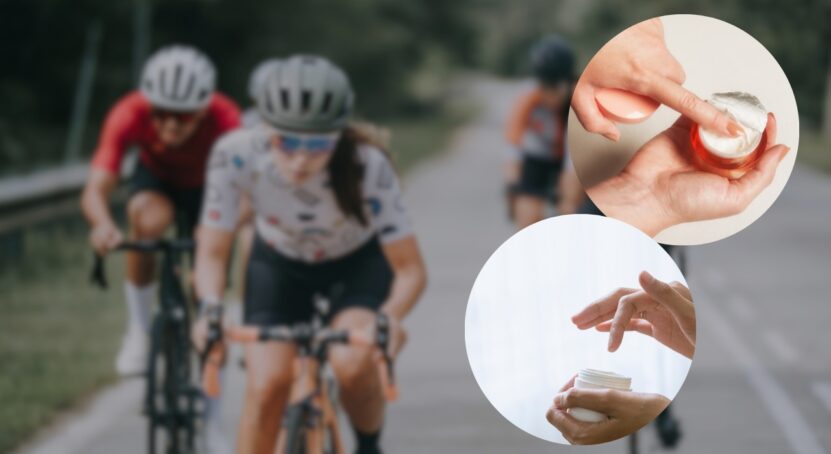
When it comes to cycling, there’s nothing more important than comfort. And when it comes to comfort, chamois cream is an essential product for any rider – male or female. Chamois cream helps to prevent saddle sores and other discomfort caused by friction between the body and the bike seat.
Chamois cream is a thick, creamy substance that helps to protect the skin against friction and chafing. It is often used by athletes and cyclists, who spend time outdoors in activities that involve repetitive motion or rubbing against rough surfaces.
Made from a variety of ingredients, including lanolin, beeswax, and petroleum jelly. Some brands also add fragrances or other ingredients to their products.
Typically applied to the skin before engaging in activities that may cause friction or chafing. It can also be used afterward to help soothe and protect the skin.
When using chamois cream, it is important to follow the directions on the product label. Some products may need to be applied more frequently than others, depending on the level of activity and the amount of friction involved.
It is also important to wash the area with soap and water after use to remove any residue.
Tips To Avoid Seat Pain While Riding
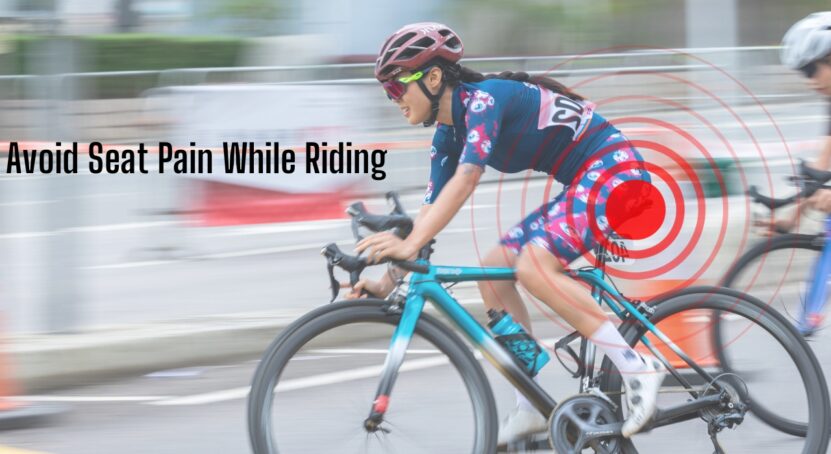
- Sit on a towel or cushion: This will help to absorb some of the vibrations from the road and make your ride more comfortable.
- Adjust your position often: This will help to distribute your weight evenly and prevent you from getting sore in one spot.
- Stand up and stretch every few miles: This will help to keep your muscles from getting too tight.
- Wear loose, comfortable clothing: This will help to prevent chafing and make you more comfortable overall.
- Drink plenty of water before and during your ride: This will help to keep your body hydrated and prevent cramping.
- Use a saddle that is the right size for you: This will help to prevent pain and discomfort in the long run.
- Take breaks often: This will give your body a chance to rest and recover from the ride.
- Listen to your body: If you start to feel pain, stop riding and take a break. It is better to be safe than sorry.
Following these tips will help you to avoid seat pain while riding. If you do start to feel pain, be sure to take a break and listen to your body. It is better to be safe than sorry.
FAQs
How do different saddle materials impact comfort during rides?
Different saddle materials, such as leather, gel, foam, or plastic, can significantly impact comfort. For instance, leather saddles often mold to the rider’s shape over time, offering a personalized fit, while gel saddles provide immediate cushioning but might not be as durable in the long run.
How does saddle width and shape affect female cyclists?
The width and shape of a saddle play a crucial role in distributing pressure. A saddle that’s too narrow might put undue pressure on the sit bones, while a saddle that’s too wide can cause chafing. Women typically have wider sit bones than men, so many manufacturers offer female-specific saddles designed to accommodate this anatomy.
Are there any exercises or stretches recommended to alleviate bike seat pain post-ride?
Yes, stretches targeting the glutes, hamstrings, hip flexors, and lower back can help alleviate post-ride discomfort. Incorporating exercises like foam rolling can also aid in muscle recovery and reduce soreness.
How do different terrains and riding styles influence bike seat discomfort?
Riding on rough terrains like trails or cobblestones can cause more vibrations, leading to increased discomfort if the saddle isn’t adequately cushioned. Similarly, aggressive riding styles or positions, such as those used in racing, might put more pressure on the perineal area, necessitating
Final Words
Cycling is a passion, a sport, and for many, a way of life. But like all good things, it can come with its set of challenges.
For many, bike seat pain can be a recurring hurdle. However, with the right knowledge and proactive measures, it’s a challenge we can overcome. By understanding the root causes of discomfort and implementing the remedies we’ve discussed, you can ensure that your rides are more about the journey and less about the pain.
Remember, every cyclist deserves a comfortable ride, and with a bit of attention to detail, that comfort is well within reach. So, gear up, adjust that saddle, and hit the road with confidence. Happy cycling! 🚴♀️

